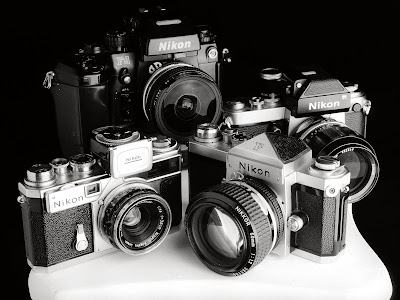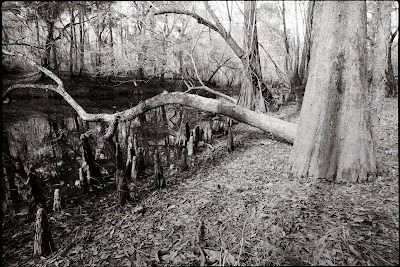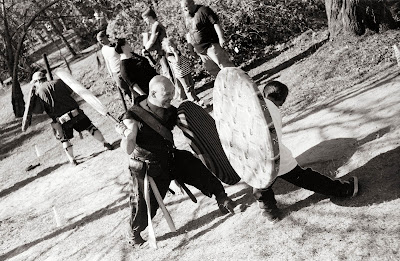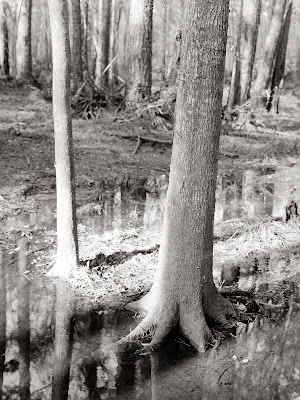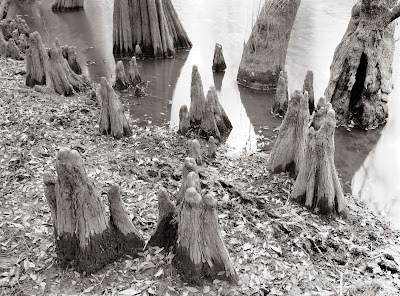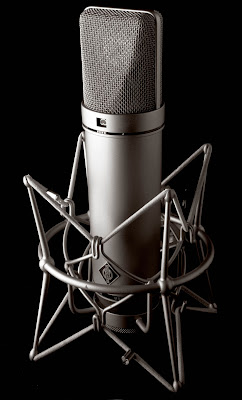In this article I will explain a technique for using T-Max developer in a high-dilution solution to extend development times and provide a generally foolproof development strategy, not only for T-Max film, but also other film.
All of the images for this article were scanned on a Screen Cézanne flatbed scanner and edited as needed in Photoshop CS5. Please refer to the image caption for specific technical details regarding the equipment and development process used for each photograph.
![]() |
| Example 1: Nikon F4, 55mm f/2.8 Micro AF Lens, T-Max 100 35mm film rated at ISO 50, T-Max RS developer at 1:19 dilution, semi-stand development. |
Kodak's T-Max film and corresponding T-Max developer (or T-Max RS for sheet films) is a combination formulated specifically for high resolution, low grain photos. Despite having a relatively straightforward development routine, T-Max film and developer can be a frustrating combo without rigorous testing and strict adherence to time and temperature controls.
![]() |
| Example 2: Nikon F2, 20mm f/2.8 AF-D Lens, T-Max 100 35mm film rated at ISO 50, T-Max RS developer at 1:32 dilution, semi-stand development. |
Kodak's recommended dilution for T-Max developers is 1:4, or 1:9 for longer development times. What I have experimented with is using dilutions of 1:19 up to 1:50 with "semi-stand" development. With semi-stand development, I would add the diluted developer to the tank and agitate for 30 seconds, and then leave the tank alone for 30 minutes. At that time I would do another 30 seconds of agitation and leave the tank for another 30 minutes (total of 1 hour). Finally, I would fix and wash as normal. This hands-off development procedure is very simple, and generally the temperature of the solution is not critical (it was generally between 65 and 70 degrees F).
![]() |
| Example 3: Nikon SP, 50mm f/1.4 Lens, T-Max 100 35mm film rated at ISO 50, T-Max developer at 1:32 dilution, semi-stand development. |
Using the developer in this way was also conducive to one-shot development. I diluted the developer to the proper dilution and used it once, and then threw out the chemicals. Due to the high dilution, a 1-liter stock solution should last you for many, many rolls of film (probably around 100 35mm rolls of film).
![]() |
| Example 4: Mamiya 645 PRO, 80mm f/1.9 Lens, Tri-X 400 120 film rated at ISO 200, T-Max developer at 1:32 dilution, semi-stand development. |
My findings concluded that, generally speaking, every film should be shot at about half the recommended ISO or ASA. For T-Max 100, I shoot it at 50. For Tri-X 400, I use ISO 200. The dilution of the developer determined contrast, similar to what one would do with time and agitation, a la the Zone System (refer to Ansel Adams' seminal book
The Negative for more information).
![]() |
| Example 5: Mamiya 645 Pro, 45mm f/2.8 Lens, Tech-Pan 120 film rated at ISO 25, T-Max RS developer at 1:40 dilution, semi-stand development. |
For N development (normal contrast, what most shots need), a dilution of 1:32 worked well. For increased contrast (N+), the 1:19 dilution was best. And finally, for less contrast (N-), 1:39 became my standard. A 1:50 dilution was generally too much, but for scenes with a lot of contrast, it might be appropriate. These dilutions worked the same whether using T-Max developer or the RS version.
![]() |
| Example 6: Chamonix 4x5, Schneider G-Claron 150mm f/9 Lens, T-Max 100 film rated at 100, T-Max RS developer at 1:39 dilution, semi-stand development. |
As with any development recipe, you should definitely test and determine your own EI (exposure index). You may find that slightly different dilutions give you better results. These results reflect what worked best for me. I am continuing to experiment with this technique with different films and situations, so it is an ongoing "development."
I hope that this development recipe gives you another tool to use with your film photos.
Contributor Bio:
Bryan Garris is a musician, recording engineer and photographer in Valdosta, GA. He enjoys shooting film in all formats, from 35mm to 8x10, and teaches photography classes in the area. To see more of his film work highlighting the South GA area, visit his blog at
valdostafilm.blogspot.com.
![]()
![]()




















